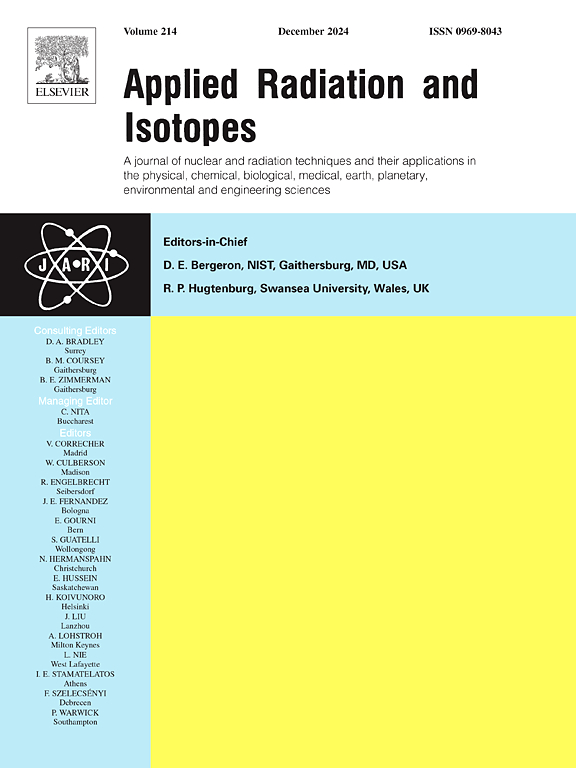Adsorption capacity and mechanism of uranium by Fusarium verticillioides HX-3 isolated from a uranium mining site
IF 1.6
3区 工程技术
Q3 CHEMISTRY, INORGANIC & NUCLEAR
引用次数: 0
Abstract
Microorganisms that survive in extreme environments may possess special survival abilities. In this study, the adsorption capacity and mechanism of F. verticillioides HX-3, a fungus isolated from uranium mine wastewater, for uranium were investigated. Single factor batch experiments such as adsorption time, biomass dosage, pH, temperature, initial uranium concentration and coexisting ion were used to study the uranium adsorption capacity of biomass. The adsorption mechanism was further explored using kinetic, isothermal, thermodynamic models, and microscopic characterization techniques. The results demonstrated that under optimal experimental conditions, the biomass reached an adsorption capacity of 10.47 mg/g at a uranium concentration of 15 mg/L, with an adsorption efficiencies of 93 %. The study also revealed that the biomass adsorption process involves inhomogeneous multilayer chemisorption and exhibits spontaneous endothermic behavior. SEM-EDS analysis revealed that U(IV) primarily adsorbs onto the biomass surface. FTIR analysis showed that the functions that played the main role in the adsorption process were amino, hydroxyl, carbonyl, and acylamino groups. In summary, F. verticillioides HX-3 holds great potential for treating uranium-containing wastewater and can serve as an environmentally friendly biosorbent.
求助全文
约1分钟内获得全文
求助全文
来源期刊

Applied Radiation and Isotopes
工程技术-核科学技术
CiteScore
3.00
自引率
12.50%
发文量
406
审稿时长
13.5 months
期刊介绍:
Applied Radiation and Isotopes provides a high quality medium for the publication of substantial, original and scientific and technological papers on the development and peaceful application of nuclear, radiation and radionuclide techniques in chemistry, physics, biochemistry, biology, medicine, security, engineering and in the earth, planetary and environmental sciences, all including dosimetry. Nuclear techniques are defined in the broadest sense and both experimental and theoretical papers are welcome. They include the development and use of α- and β-particles, X-rays and γ-rays, neutrons and other nuclear particles and radiations from all sources, including radionuclides, synchrotron sources, cyclotrons and reactors and from the natural environment.
The journal aims to publish papers with significance to an international audience, containing substantial novelty and scientific impact. The Editors reserve the rights to reject, with or without external review, papers that do not meet these criteria.
Papers dealing with radiation processing, i.e., where radiation is used to bring about a biological, chemical or physical change in a material, should be directed to our sister journal Radiation Physics and Chemistry.
 求助内容:
求助内容: 应助结果提醒方式:
应助结果提醒方式:


